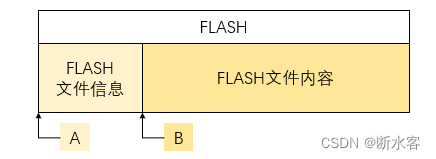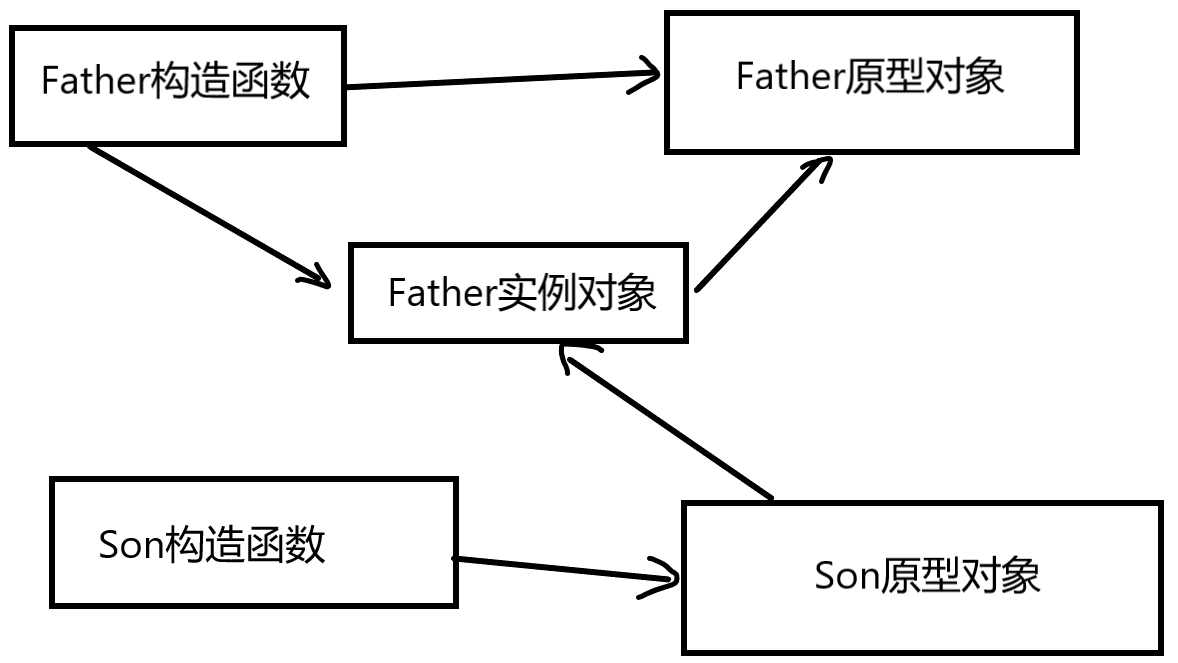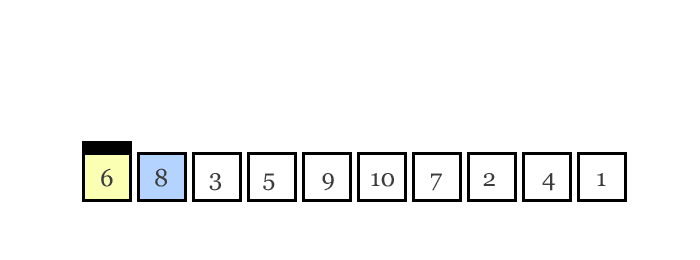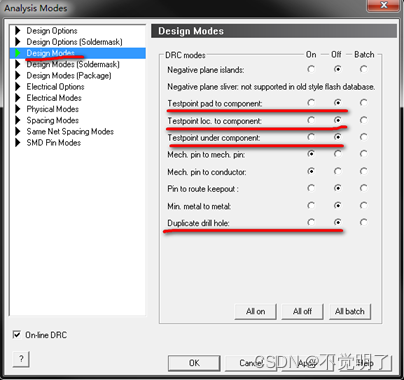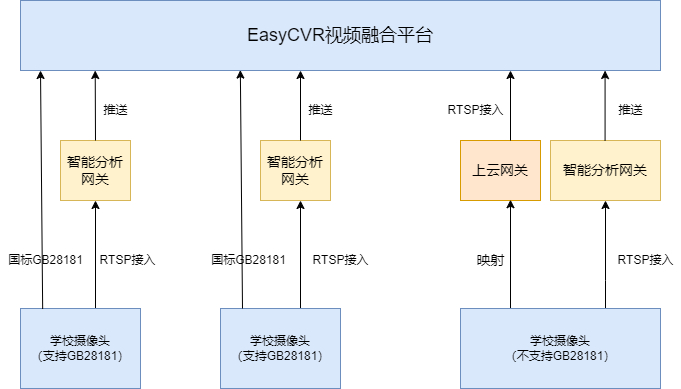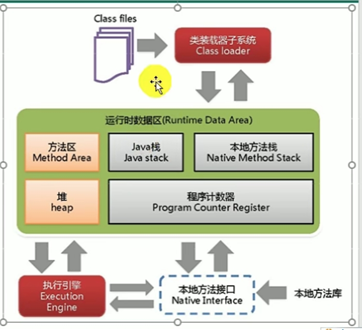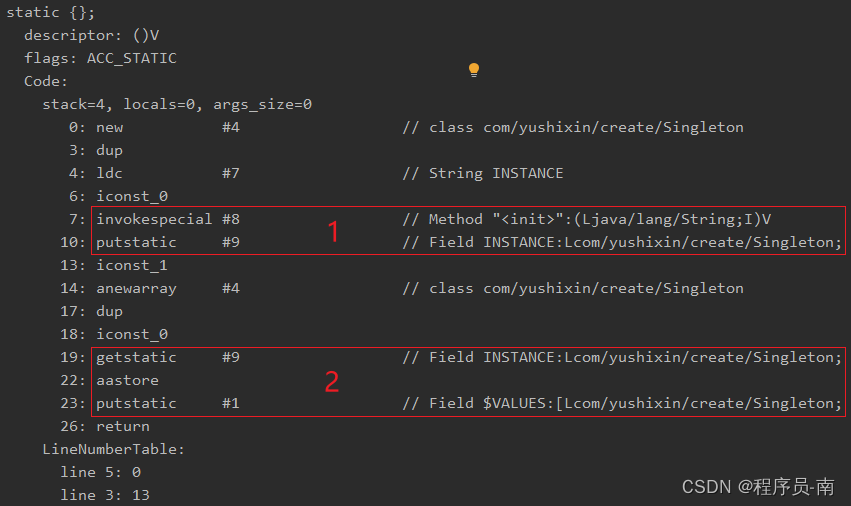线性表专题
每道题目均有对应的代码,大家自行查看哦!

顺序表
ADT:SeqList
文件名:SeqList.hpp
#include <iostream>
#include <cstdlib>
using namespace std;
// 以上是实际运行所需依赖,考试不用写
typedef int elemType;
struct SeqList
{
elemType *data; // 利用数组存储数据元素
int curLength=0; // 当前顺序表中存储的元素个数
int maxSize; // 顺序表的初始化最大长度
SeqList(int size = 10){
maxSize = size;
}
};
/**
* 以下为测试方法,考试不用写
*/
// 初始化数据
void init(SeqList *seqlist)
{
seqlist->data = new elemType[seqlist->maxSize];
for (int i = 1; i < 10; i++)
{
seqlist->data[i - 1] = i;
seqlist->curLength++;
}
}
// 自定义初始化数据
void initByCustom(SeqList *seqlist)
{
seqlist->data = new elemType[seqlist->maxSize];
elemType value;
cout << "\ninput the SeqList's data (the maxSize is " << seqlist->maxSize <<"):"<< endl;
for (int i = 0; i < seqlist->maxSize; i++)
{
cin >> value;
seqlist->data[i] = value;
seqlist->curLength++;
}
}
// 输出结果
void output(SeqList *seqlist)
{
cout << "\nThe SeqList's data is: " << endl;
for (int i = 0; i < seqlist->curLength; i++)
{
cout << seqlist->data[i] << " ";
}
cout << endl;
}
真题实战
2010年统考真题
1、题目详情

2、代码实现
文件名:SeqList_2010.cpp
#include "SeqList.hpp"
void reverse(SeqList *seqlist,int begin,int end)
{
elemType temp;
while (end>begin)
{
temp = seqlist->data[begin];
seqlist->data[begin] = seqlist->data[end];
seqlist->data[end] = temp;
begin++;
end--;
}
}
void _2010(SeqList *seqlist, int p)
{
reverse(seqlist, 0, seqlist->curLength - 1);
reverse(seqlist, 0, seqlist->curLength - p - 1);
reverse(seqlist, p+1, seqlist->curLength - 1);
}
int main()
{
SeqList *seqlist = new SeqList();
init(seqlist);
output(seqlist);
_2010(seqlist, 4);
cout << "\nAfter rotating 4 bits to the left" << endl;
output(seqlist);
cout<< "\n==============================End==============================" << endl;
system("pause");
return 0;
}
运行结果:
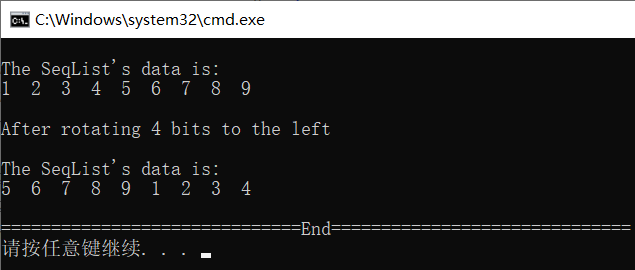
3、答案解析
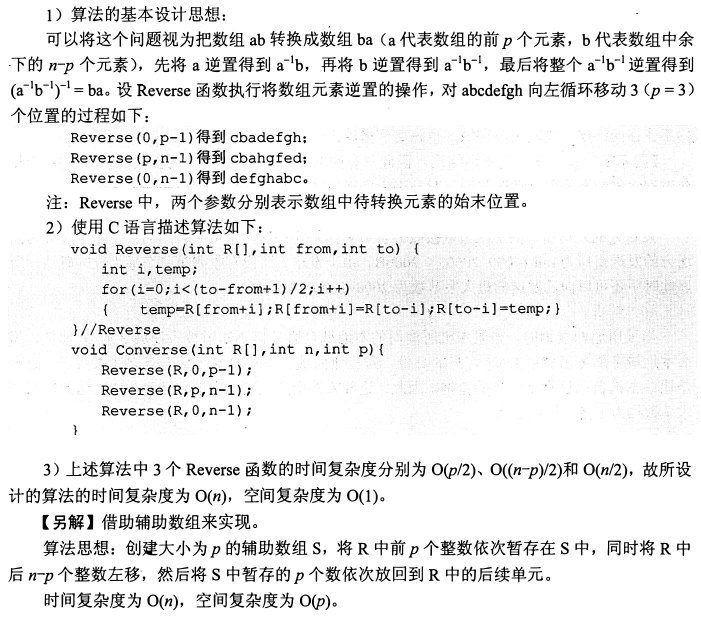
2011年统考真题
1、题目详情

2、代码实现
文件名:SeqList_2011.cpp
#include "SeqList.hpp"
elemType _2011(SeqList *s1, SeqList *s2)
{
elemType result;
for (int i = 0,j=0,count=0; count< s1->curLength; count++)
{
if(s1->data[i]<=s2->data[j])
result = s1->data[i++];
else
result = s2->data[j++];
}
return result;
}
int main()
{
SeqList *s1 = new SeqList(5);
SeqList *s2 = new SeqList(5);
initByCustom(s1);
cout << "--------------------------" << endl;
initByCustom(s2);
cout << "\nThe median of S1 and S2 is " << _2011(s1, s2) << endl;
cout << "\n==============================End==============================" << endl;
system("pause");
return 0;
}
运行结果:
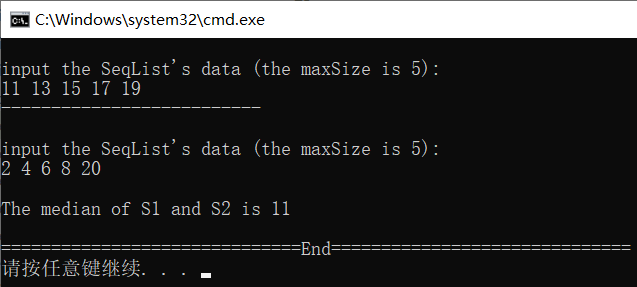
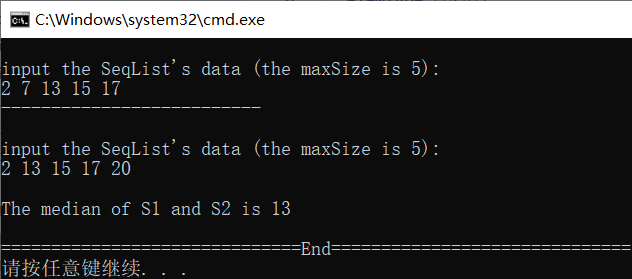
3、答案解析
首先给出我自己的思路(也就是官方的另解):
-
两个等长序列的中位数就是他们合在一起形成的有序序列(不使用排序算法,直接通过指针对比+最小值的记录即可)的中位数,因此通过L(s1/s2的长度)次循环,依次对比并记录两个数组的最小值,则最终记录的结果就是他们的中位数。
-
我这个算法的时间复杂度为O(L),空间复杂度为O(1)
以下是官方解析:
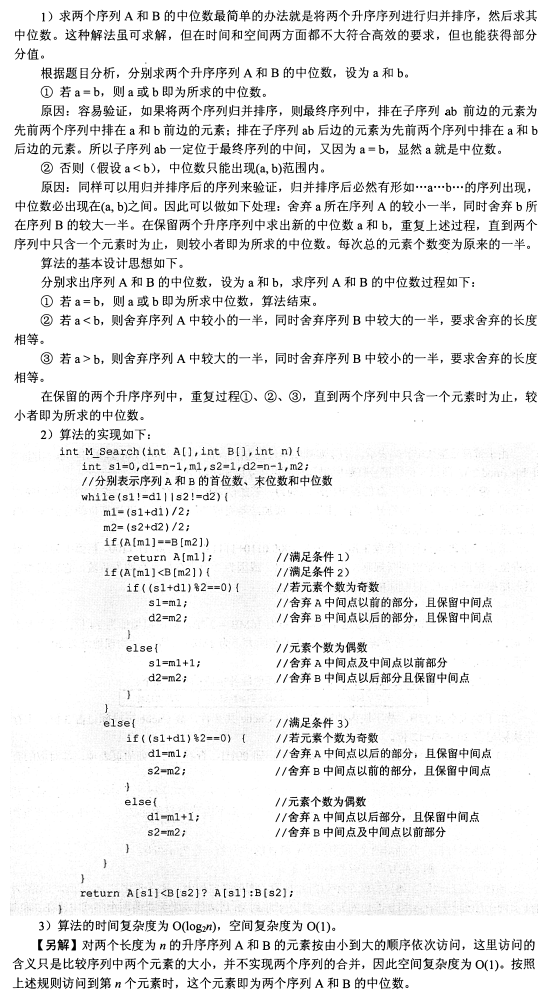
2013年统考真题
1、题目详情

2、代码实现
文件名:SeqList_2013.cpp
注:用排序的方法大家可以看排序专题学习后自己实现(对比暴力算法的代码会多一点点,考试时用的话,要保证不要写错哦),最优解法大家可以看答案解析(比较难想,考试实在想不出就暴力吧),这里我写的是传统暴力解法:
#include "SeqList.hpp"
int _2013(SeqList *seqlist)
{
int maxCount = 0,count=0;
elemType result;
for (int i = 0; i < seqlist->curLength; i++)
{
count = 0;
for (int j = 0; j < seqlist->curLength; j++)
{
if (seqlist->data[i] == seqlist->data[j])
count++;
}
if (count>=maxCount){
maxCount = count;
result = seqlist->data[i];
}
}
// cout << "maxCount is: " << maxCount << endl;
// cout << "result is: " << result << endl;
if (maxCount > seqlist->curLength / 2)
return result;
else
return -1;
}
int main()
{
SeqList *seqlist = new SeqList(8);
initByCustom(seqlist);
// output(seqlist);
int result = _2013(seqlist);
if (result == -1)
cout << "Main element not found!" << endl;
else
cout << "The main element is: " << result << endl;
cout << "\n==============================End==============================" << endl;
system("pause");
return 0;
}
运行结果:


3、答案解析

2018年统考真题
1、题目详情

2、代码实现
我的方法是通过快排,将数组排好序后,依次查找最小正整数是否存在,时间复杂度为O(nlogn),空间复杂度为O(logn)。
文件名:SeqList_2018.cpp
#include "SeqList.hpp"
int partition(int *arr, int low, int high)
{
int pivot = arr[low];
while (low < high)
{
while (low < high && arr[high] >= pivot)
high--;
arr[low] = arr[high];
while (low < high && arr[low] <= pivot)
low++;
arr[high] = arr[low];
}
arr[low] = pivot;
return low;
}
// 快速排序
void quick_sort(int *arr, int low, int high)
{
if (low < high)
{
int p = partition(arr, low, high);
quick_sort(arr, low, p - 1);
quick_sort(arr, p + 1, high);
}
}
int _2018(SeqList *seqlist)
{
quick_sort(seqlist->data, 0, seqlist->curLength - 1);
int j = 0;
while (seqlist->data[j] <= 0 && j < seqlist->curLength-1)
j++;
if(j==seqlist->curLength)
return 1;
int i;
for (i = 1; j < seqlist->curLength; j++)
{
if(seqlist->data[j]>i)
return i;
if (seqlist->data[j] == i)
i++;
}
return i;
}
int main()
{
SeqList *seqlist = new SeqList(5);
initByCustom(seqlist);
cout << "The minimum positive number that does not appear is: " << _2018(seqlist) << endl;
cout
<< "\n==============================End==============================" << endl;
system("pause");
return 0;
}
运行结果:




3、答案解析
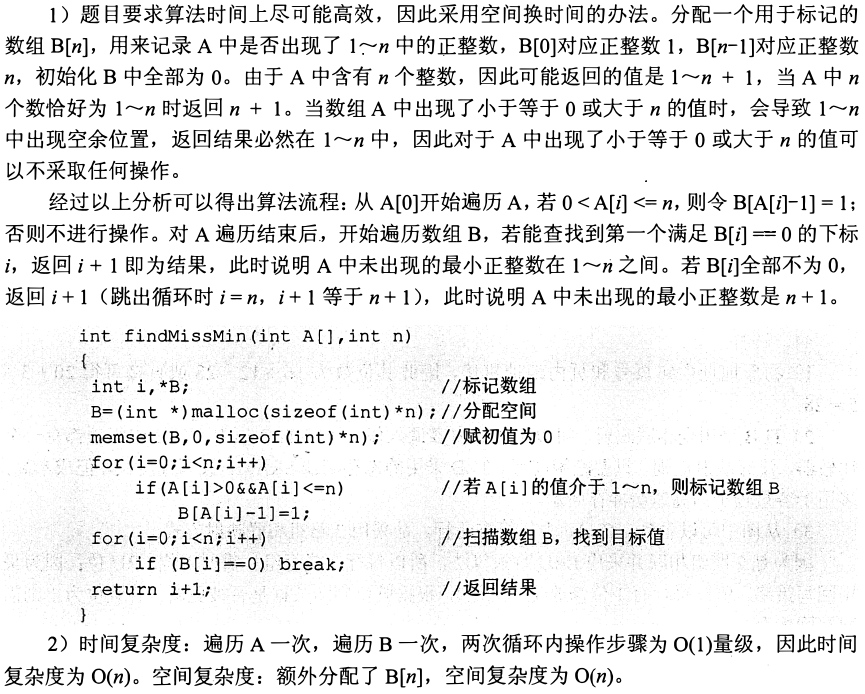
2020年统考真题
1、题目详情

2、代码实现
暴力O(n^3)在考试实在不会就写吧,其实也行,毕竟这题还是挺难的/(ㄒoㄒ)/~~,暴力解法太简单了,这里就略了,大家可以自己实战一下,这里还是给出答案版代码:
文件名:SeqList_2020.cpp
#include "SeqList.hpp"
#define INT_MAX 0x7fffffff
int abs_(int a){
if(a<0)
return -a;
else
return a;
}
bool xls_min(int a,int b,int c){
if(a<=b&&a<=c) return true;
return false;
}
int _2020(SeqList *A, SeqList *B, SeqList *C ){
int i = 0, j = 0, k = 0, D_min = INT_MAX, D;
while (i<A->curLength&&j<B->curLength&&k<C->curLength&&D_min>0){
D = abs_(A->data[i] - B->data[j]) + abs_(B->data[j] - C->data[k]) + abs_(C->data[k] - A->data[i]);
if (D<D_min) D_min = D;
if (xls_min(A->data[i], B->data[j], C->data[k]))
i++;
else if (xls_min(B->data[j], C->data[k], A->data[i]))
j++;
else
k++;
}
return D_min;
}
int main()
{
SeqList *A = new SeqList(3);
initByCustom(A);
SeqList *B = new SeqList(4);
initByCustom(B);
SeqList *C = new SeqList(5);
initByCustom(C);
cout << "\nThe minimum distance of a triple is: " << _2020(A,B,C) << endl;
cout
<< "\n==============================End==============================" << endl;
system("pause");
return 0;
}
运行结果:
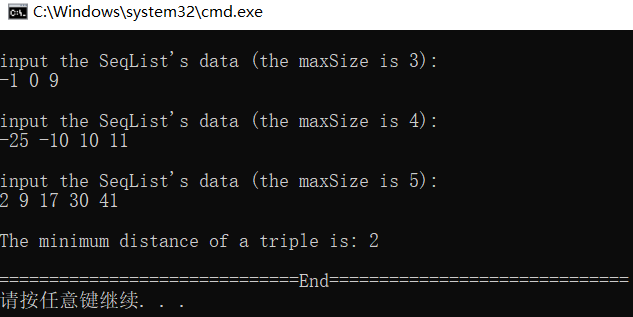
3、答案解析
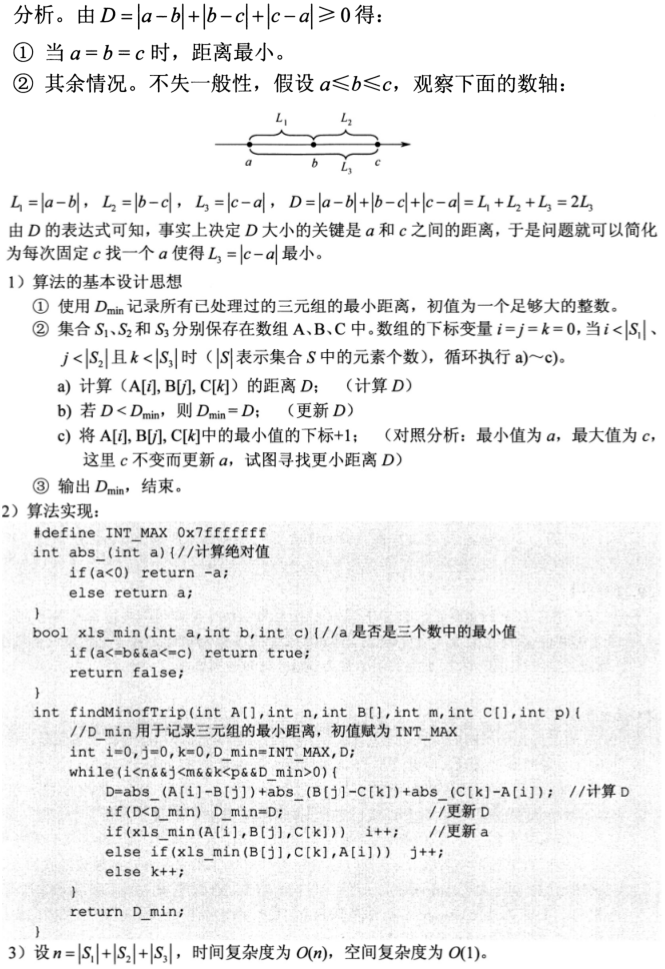
顺序表习题
- 题目源于王道
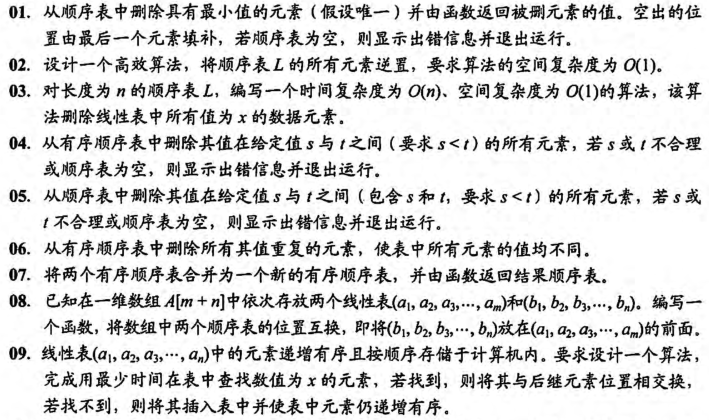
链表
ADT:LinkList
文件名:LinkList.hpp
#include <iostream>
#include <cstdlib>
#include <ctime>
using namespace std;
// 以上为实际运行所需依赖,考试不必填写
typedef int elemType;
struct LinkNode
{
// 结点的数据域
elemType data;
// 结点的指针域,指向后继结点
LinkNode *next;
// 具有两个参数的LinkNode构造函数
LinkNode(const elemType value, LinkNode *p = NULL)
{
data = value;
next = p;
}
// 具有一个参数的LinkNode构造函数
LinkNode(LinkNode *p = NULL) { next = p; }
};
// 遍历单链表
void traverse(LinkNode *head)
{
LinkNode *p = head->next;
cout << "\nYour created data is:\n";
while (p != NULL)
{
cout << p->data << " ";
p = p->next;
}
cout << endl
<< endl;
}
// 带头节点的头插法初始化创建测试数据
int initNum = 10;
void init(LinkNode *head)
{
LinkNode *p;
elemType value, flag;
// 系统生成测试数据
srand((unsigned)time(NULL));
for (int i = 0; i < initNum; i++)
{
//生成[0,100)的随机数
value = rand() % 100;
p = new LinkNode(value, head->next);
// 结点p插入到头结点的后面
head->next = p;
}
}
// 尾插法自定义初始化数据
void initByCUstom(LinkNode *head)
{
LinkNode *tail = head, *p;
elemType value, flag;
cout << "input the flag to end with: " << endl;
cin >> flag;
cout << endl;
cout << "input the LinkList's data: " << endl;
while (cin >> value, value != flag)
{
p = new LinkNode(value);
// 结点p插入到尾结点的后面
tail->next = p;
tail = p;
}
cout << endl;
}
字符类型的链表测试ADT
文件名:LinkList_char.hpp
#include <iostream>
#include <cstdlib>
using namespace std;
// 以上是实际运行所需依赖,考试不用写
typedef char elemType;
struct LinkNode
{
// 结点的数据域
elemType data;
// 结点的指针域,指向后继结点
LinkNode *next;
// 具有两个参数的LinkNode构造函数
LinkNode(const elemType value, LinkNode *p = NULL)
{
data = value;
next = p;
}
// 具有一个参数的LinkNode构造函数
LinkNode(LinkNode *p = NULL) { next = p; }
};
/**
* 以下为测试方法,考试不用写
*/
// 遍历单链表
void traverse(LinkNode *head)
{
LinkNode *p = head->next;
cout << "\nYour created data is:\n";
while (p != NULL)
{
cout << p->data << " ";
p = p->next;
}
cout << endl
<< endl;
}
// 尾插法初始化数据
void initByCUstom(LinkNode *head)
{
LinkNode *tail = head,*p;
elemType value, flag;
cout << "input the flag to end with: " << endl;
cin >> flag;
cout << endl;
cout << "input the LinkList's data: " << endl;
while (cin >> value, value != flag)
{
p = new LinkNode(value);
// 结点p插入到尾结点的后面
tail->next = p;
tail = p;
}
cout << endl;
}
真题实战
2009年统考真题
1、题目详情
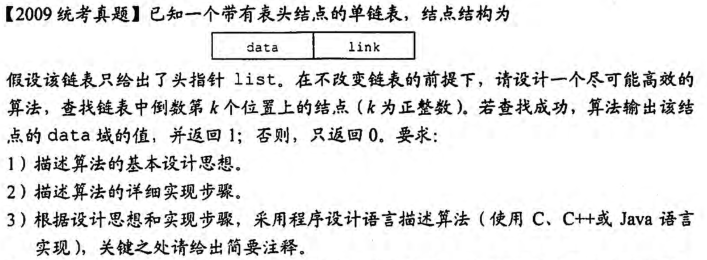
2、代码实现
文件名:LinkList_2009.cpp
#include "LinkList.hpp"
int _2009(LinkNode *head, int k)
{
LinkNode *q= head->next;
LinkNode *p = q;
int count = 0;
while (p!=NULL)
{
if (count<k) count++;
else q = q->next;
p = p->next;
}
if (count < k)
return 0;
else{
cout << q->data << endl;
return 1;
}
}
int main()
{
LinkNode *head = new LinkNode();
init(head);
traverse(head);
cout << "Find end with 3 data is: "
<< _2009(head, 3);
cout << "\n==============================End==============================" << endl;
system("pause");
return 0;
}
运行结果:
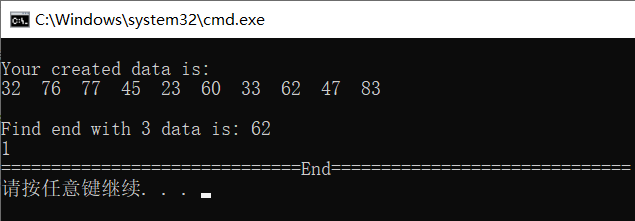
3、答案解析
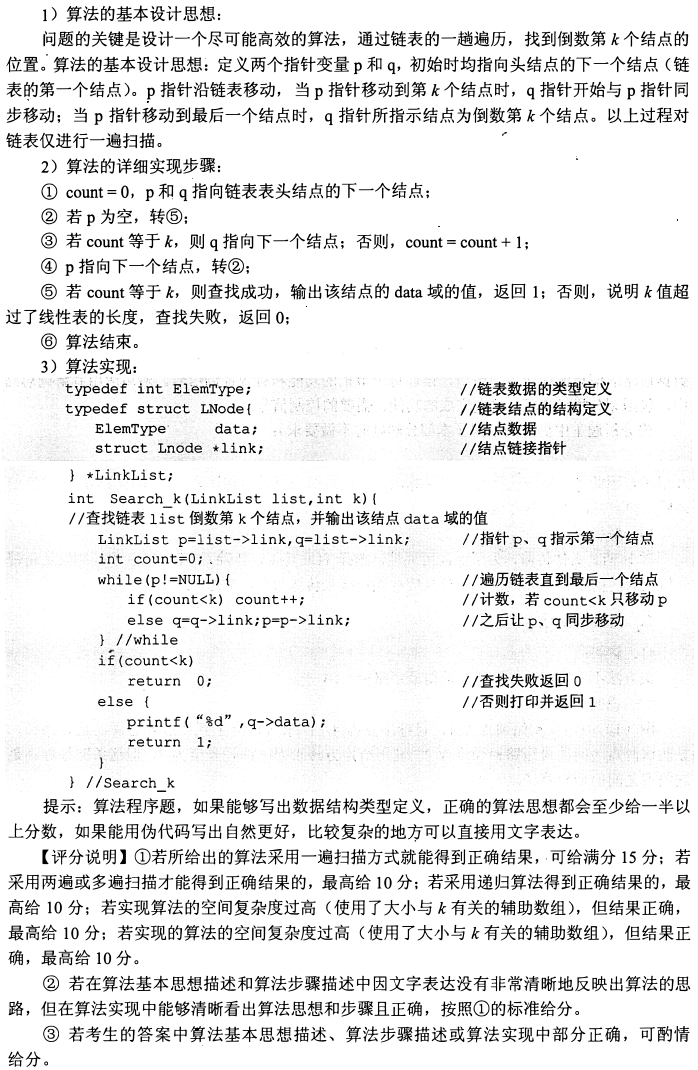
2012年统考真题
1、题目详情
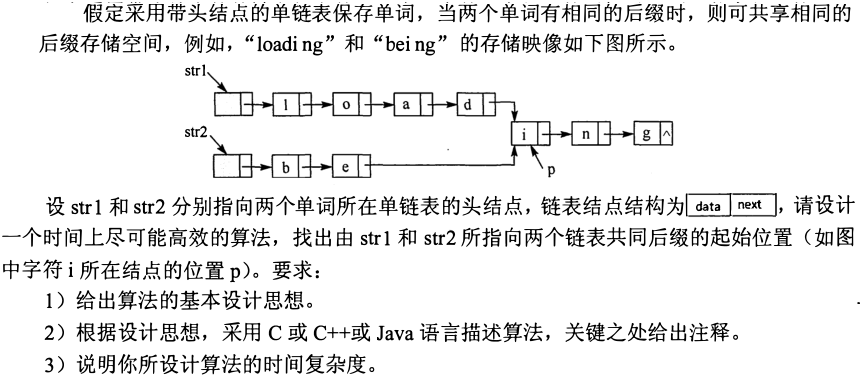
2、代码实现
文件名:LinkList_2012.cpp
#include "LinkList_char.hpp"
int getLength(LinkNode *str){
LinkNode *p = str->next;
int count = 0;
while (p)
{
count++;
p = p->next;
}
return count;
}
elemType _2012(LinkNode *head1, LinkNode *head2)
{
int len1 = getLength(head1);
int len2 = getLength(head2);
LinkNode *str1 = head1->next;
LinkNode *str2 = head2->next;
int count = 0;
if (len1>len2){
while (count<len1-len2)
{
str1 = str1->next;
count++;
}
}else
{
while (count < len2 - len1)
{
str2 = str2->next;
count++;
}
}
while (str1&&str2)
{
if(str1->data==str2->data)
return str1->data;
str1 = str1->next;
str2 = str2->next;
}
return NULL;
}
int main()
{
LinkNode *str1 = new LinkNode();
initByCUstom(str1);
LinkNode *str2 = new LinkNode();
initByCUstom(str2);
cout << "\nThe common suffix starts with :" << _2012(str1, str2)
<< endl;
cout << "\n==============================End==============================" << endl;
system("pause");
return 0;
}
运行结果:
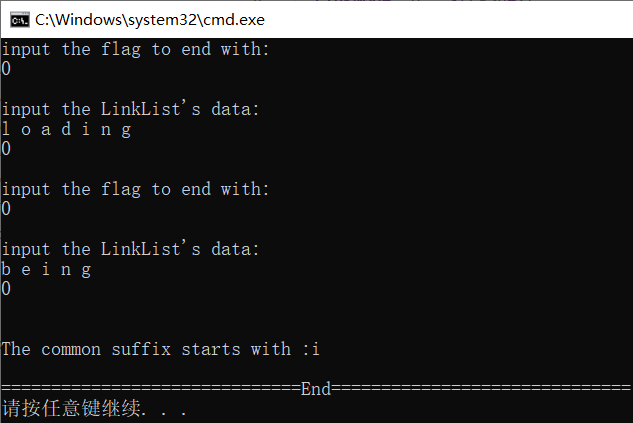
3、答案解析
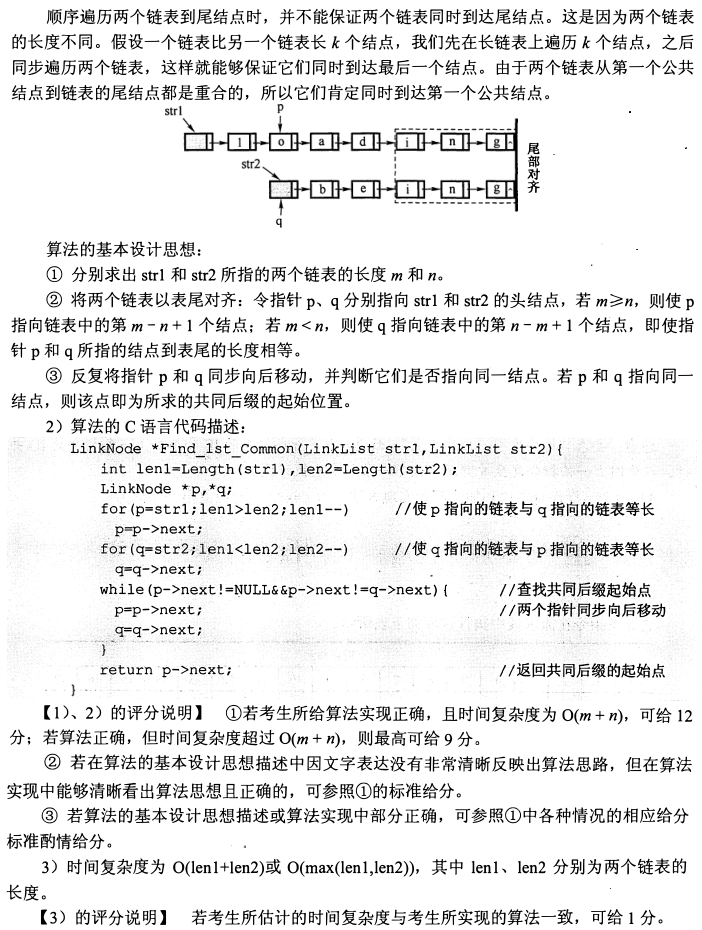
2015年统考真题
1、题目详情

2、代码实现
这里我给出传统的暴力解法,利用辅助空间可以看答案解析的方法,优化还可以考虑散列表哦!
文件名:LinkList_2015.cpp
#include "LinkList.hpp"
void _2015(LinkNode *head)
{
LinkNode *p = head->next;
LinkNode *q;
LinkNode *t;
while (p)
{
elemType value = p->data;
q = p;
while (q->next)
{
if (value == q->next->data || value == (-1) * q->next->data)
{
t = q->next;
q->next = q->next->next;
delete t;
}
else q = q->next;
}
p = p->next;
}
}
int main()
{
LinkNode *head = new LinkNode();
initByCUstom(head);
_2015(head);
cout << "\nAfter deleting nodes with equal absolute values, the data is: " << endl;
traverse(head);
cout << "\n==============================End==============================" << endl;
system("pause");
return 0;
}
运行结果:
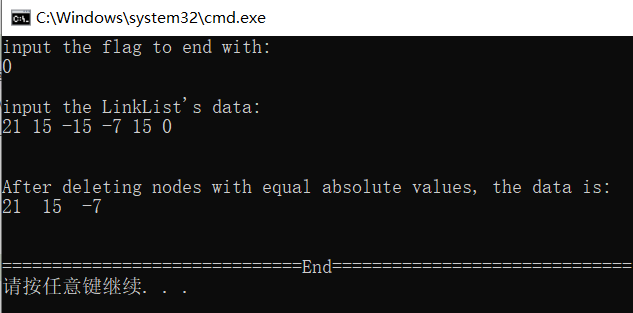
3、答案解析
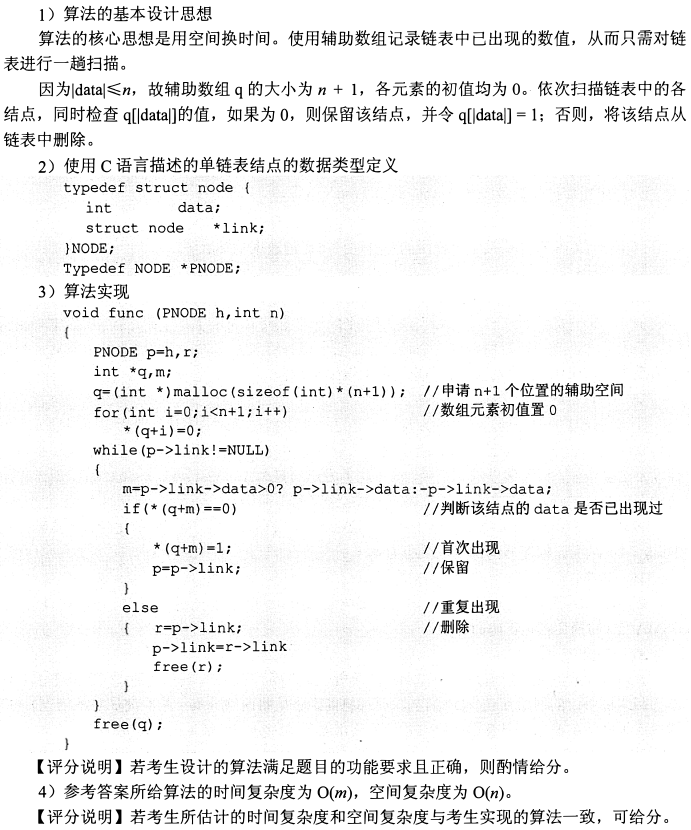
2019年统考真题
1、题目详情
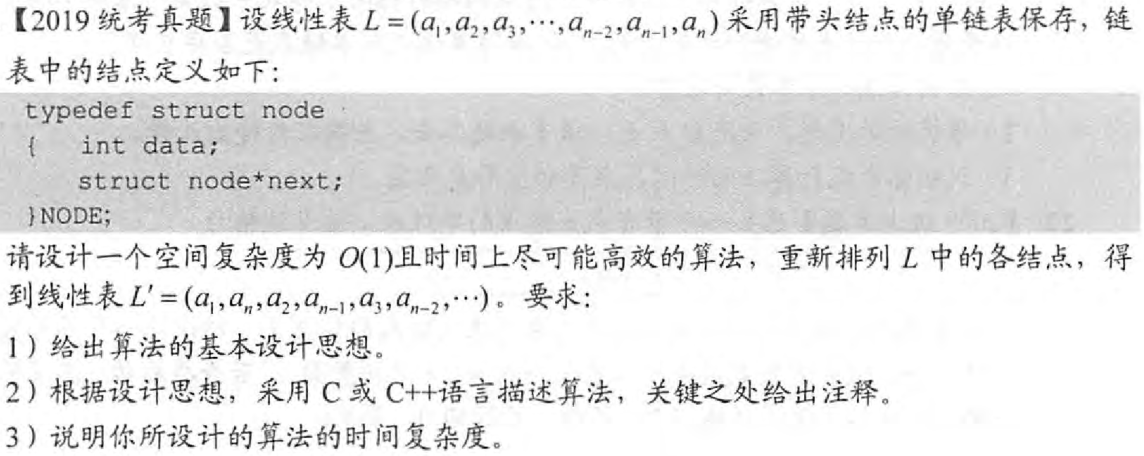
2、代码实现
文件名:LinkList_2019.cpp
#include "LinkList.hpp"
void _2019(LinkNode *head)
{
LinkNode *p = head->next;
LinkNode *q =p;
// 找到中间位置
while (q&&q->next)
{
q = q->next->next;
p = p->next;
}
LinkNode *tail = head->next;
// 将链表一分为二
while (tail->next!=p)
tail = tail->next;
// 后半段链表进行逆置
LinkNode *head2 = new LinkNode();
while (p)
{
tail->next = p->next;
p->next =head2->next;
head2->next = p;
p = tail->next;
}
p = head->next;
// 后半段链表依次拆分节点按要求间接拼接到原来的链表后
while (p)
{
q = head2->next;
head2->next = q->next;
q->next = p->next;
p->next = q;
p = q->next;
}
// 处理奇数个数时,余留的最后一个数
if (head2->next != NULL)
{
q->next = head2->next;
}
}
int main()
{
LinkNode *head = new LinkNode();
initByCUstom(head);
_2019(head);
cout << "\nThe result after rearrangement is: " << endl;
traverse(head);
cout << "\n==============================End==============================" << endl;
system("pause");
return 0;
}
运行结果:

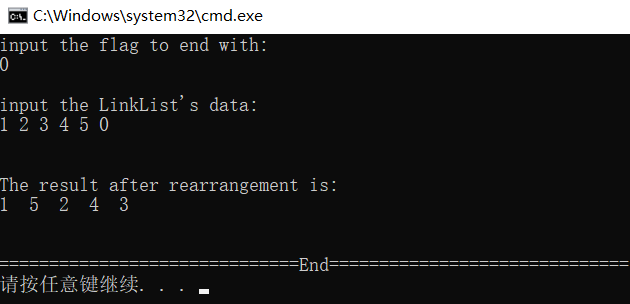
3、答案解析
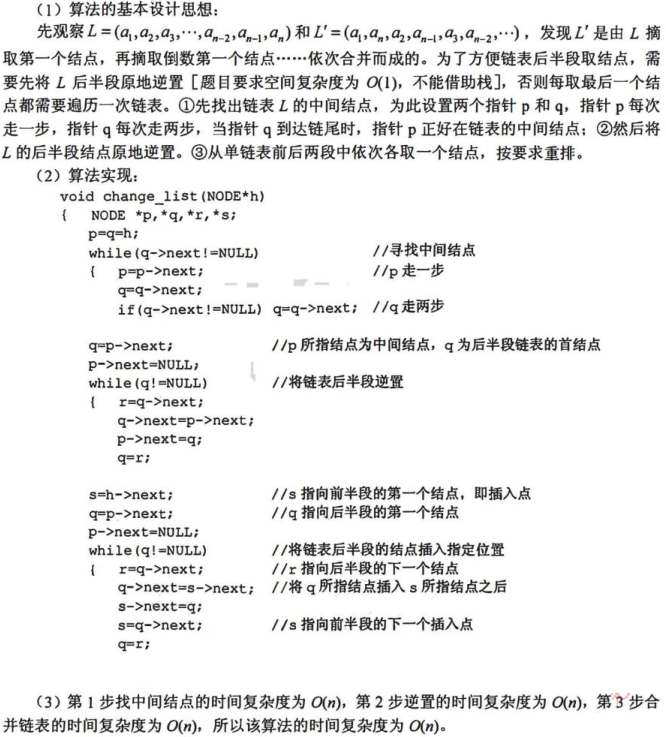
链表习题
- 题目来源于王道
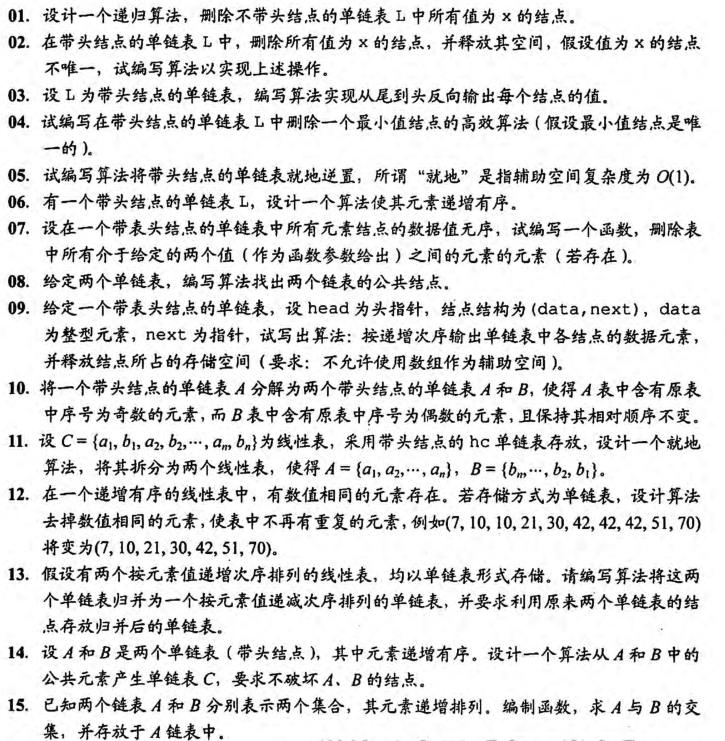

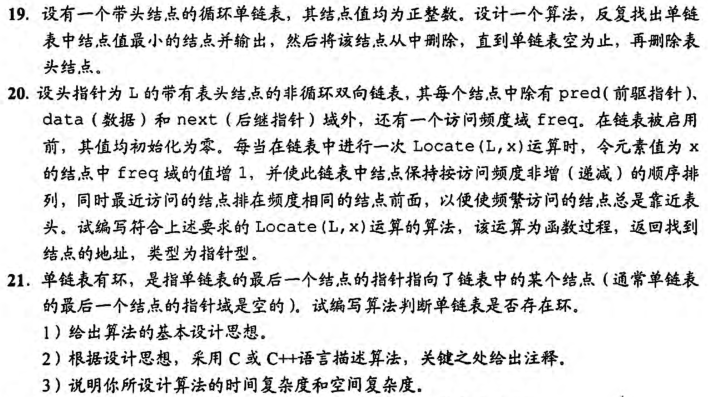
线性表专题训练
- 题目源于算法与数据结构考研试题精析
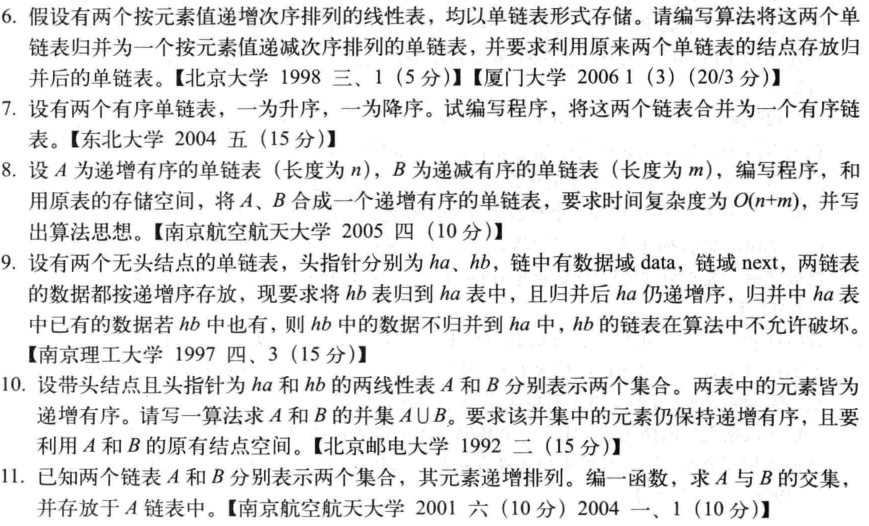
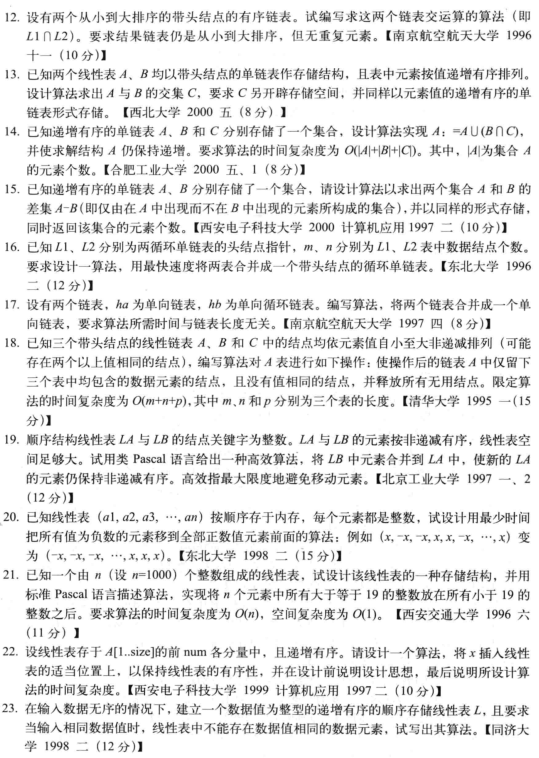
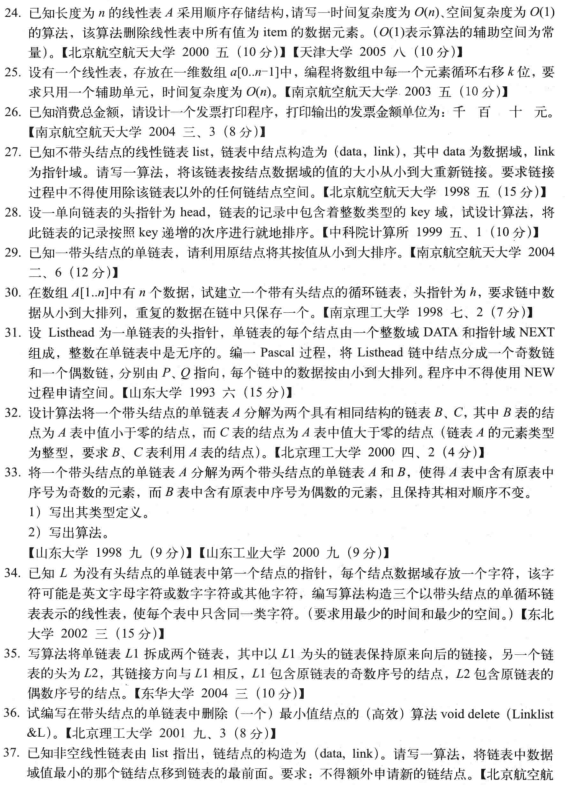
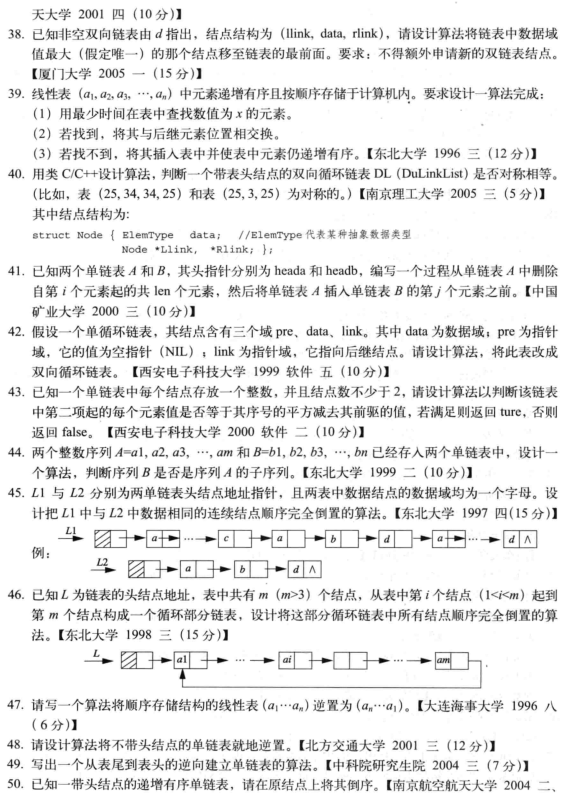

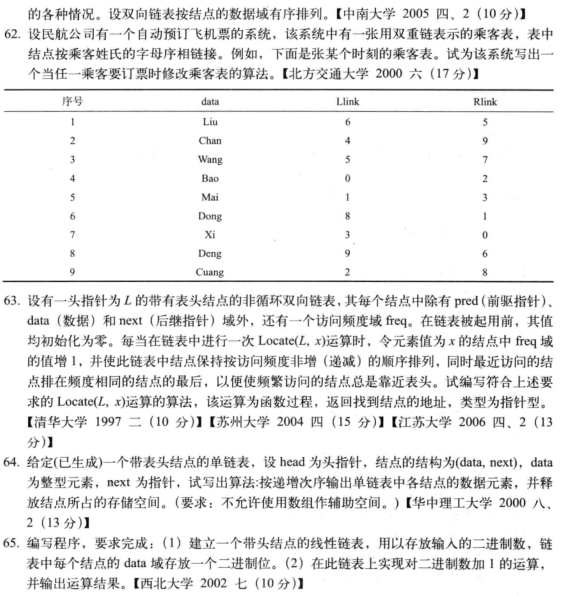
后续更新
等后面有时间会把上面题目的完整代码+运行示例补充更新完善,大家尽情期待!
